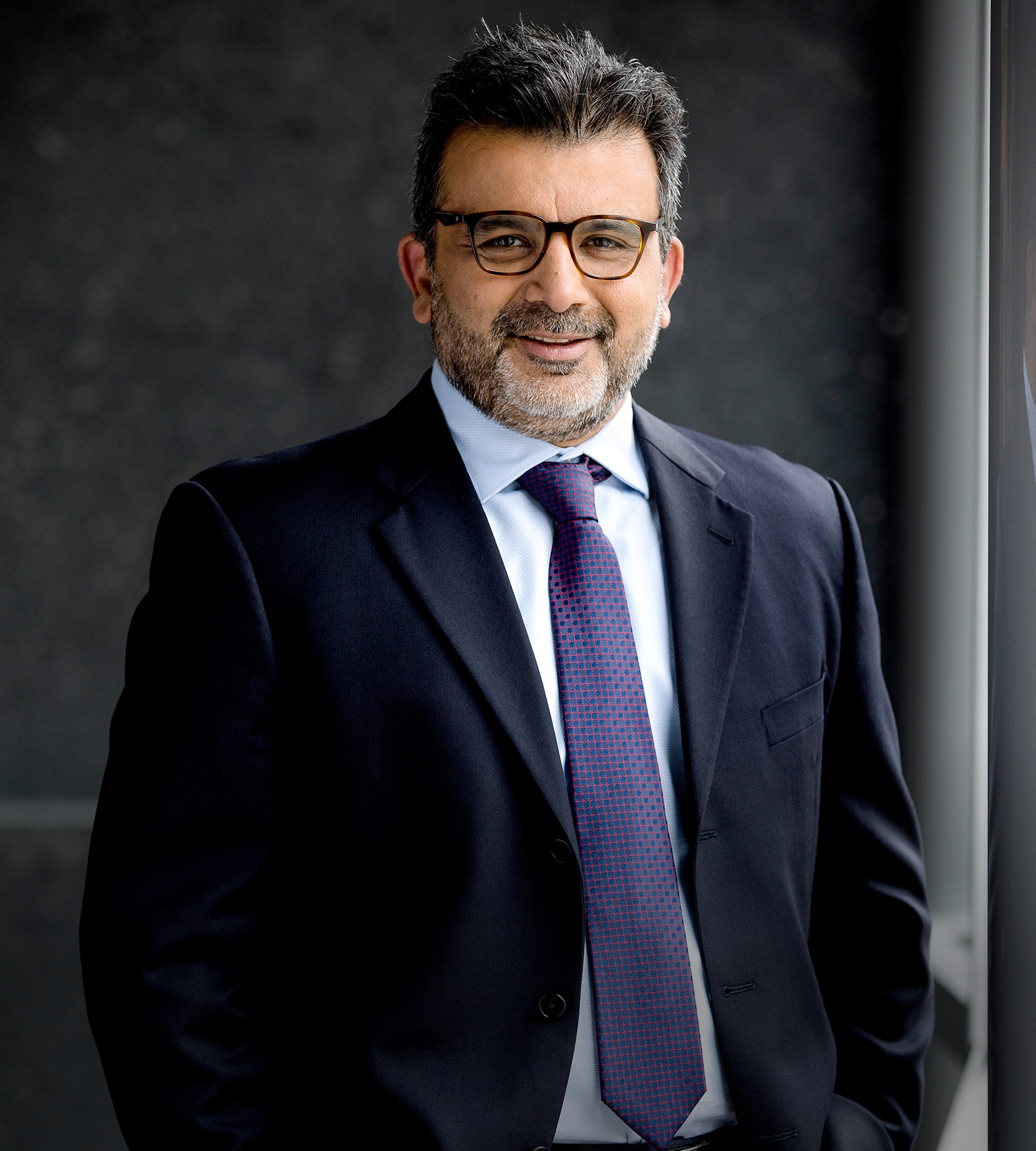Language
You can read the magazine in one of the following languages
When seven engineers came together in a San Diego den in the first meeting of Qualcomm Technologies in 1985, they had neither a business plan nor a product. But they did have a mission: to create quality communications (where the name Qualcomm would originate from). Together, they soon developed Code Division Multiple Access, a technology that formed the base for every 3G network across the globe.
From here, the company has grown into a global leader in wireless technologies and today has 170 offices in 30 countries and even a museum dedicated to its incredible growth story.

“Our differentiation is that we view our products as integral to our customers’ product – and not just for today, but for the future.”
“We are an engineering-centric culture that thrives in understanding, and solving, complex technology problems that face industries as they go through digital transformation. We then drive the value chain and the ecosystem around it for the most meaningful impact,” explains Nakul Duggal, Senior Vice President and General Manager, Automotive.
With such a philosophy, it’s little surprise that Qualcomm made its entry into the increasingly digitized automotive industry in 2011 – and Duggal has been the division lead since day one.
“Throughout my time leading Qualcomm’s automotive team, it’s become increasingly evident that the automotive industry has served as a proxy for the digital evolution of many other industries and has indirectly presented our team with the opportunity to establish ourselves as a key enabler,” he says.
In developing products to power smart cars, Qualcomm’s automotive division has given the market innovations such as the Snapdragon Digital Chassis, a set of cloud-connected platforms for telematics and connectivity, computing and driver assistance and autonomy.
Car manufacturers such as Mercedes-Benz, Stellantis, Renault, General Motors, NIO, BYD, BMW, Volkswagen, XPeng Motors, Li Auto and Woven Planet, to name a few, trust the platform to provide connected, intelligent and customizable experiences that can be updated as new technologies and digital services enter the market.
“I often get asked how we are able to work with so many automakers all at the same time,” he says. “People say, ‘these guys are competitors, how are you the common thread that actually connects them all?’”
The answer, Duggal explains, is quite simple.
Advertisement
“Our differentiation is that we view our products as integral to our customers’ product – and not just for today, but for the future,” he says.
“The vehicle architecture is evolving to be more software-defined, which in turn requires automotive companies to become technology companies. That’s where we come in. Many of the decisions we’ve made are really an indicator of our understanding of what every automaker – and their end-customers – need,” he continues.
“Then, we look at building a product that makes sense for them, understanding their risks, concerns, affordability and need for flexibility.”
If you start to develop that muscle well, he adds, it just becomes a part of how the business is run. “Because of our consistent and customer-forward approach, we’ve built and continue to nurture close, trustworthy and dependable relationships with global automakers.”
In the last few years, Qualcomm has become an even greater trusted partner. Duggal explains how the semiconductor crisis provided an opportunity for the business to showcase the value it brings to the auto industry.
“Since the semiconductor itself was not really a space that automakers had a deep understanding of, it exposed an Achilles heel,” he explains.
Prioritizing automotive above everything else, he says the company was able to steer its way through the crisis, while delivering what its clients needed.
“Now, having prioritized automotive above all of our other businesses during the chip crisis, we earned trust and confidence as we helped automakers become more secure in their semiconductor supply chain, and we remain committed as partners to ensure this never happens again,” he says.

“We deeply understand power consumption and how to get the most performance out of a limited amount of power budget.”
Qualcomm’s background in smartphones has also given it a leading edge as manufacturers seek to make responsible choices across the framework of vehicle design.
“We deeply understand power consumption and how to get the most performance out of a limited amount of power budget. This has never been more important as the automotive industry accelerates towards electrification where the trade-off is with range and system cost” he says.
It’s a principle that brings great success when crossing over to products in the automotive space.
“This isn’t something that a lot of competitors necessarily know how to do all that well, so it gives us a product advantage,” he explains. “It also serves the purpose of sustainability in that we can drive much higher performance for a limited amount of thermal footprint.”
A qualified engineer, Duggal first joined Qualcomm in 1995.
“The bar is high in terms of being able to impress your colleagues,” he says with a laugh. “I’m surrounded by a lot of very smart people that are always focused on solving complex technical problems.”
It’s an environment that continues to motivate him, even as he approaches his 28th year with the business.
He feels particularly fortunate to have found himself in his current place in the business.

“Having a front row seat is what gets me and my team up in the morning, because we really are at the leading edge of all this impact.”
“Automotive is redefining transportation and mobility as it now traverses industries and global economies in terms of its importance,” he says.
Electrification and the Digital Connected Car is impacting infrastructure, sustainability, intelligent manufacturing, self-sufficiency, new business models, a re-thinking around logistics, and so much more. These changes are driving a GDP-level, global multi-industry impact.”
And Duggal knows he is in a unique position to see what innovations will drive the industry in the coming years.
“Over the next few decades, our world is going to look very different with so much technology and modernization still to come,” he concludes.
“Having a front row seat and a critical hand in the industry’s digital transformation is what gets my team and I up in the morning, because we really are at the leading edge of all this impact. To know that we have had a meaningful role to play in the global evolution of this fascinating industry is highly rewarding and the best part of my career so far.”

